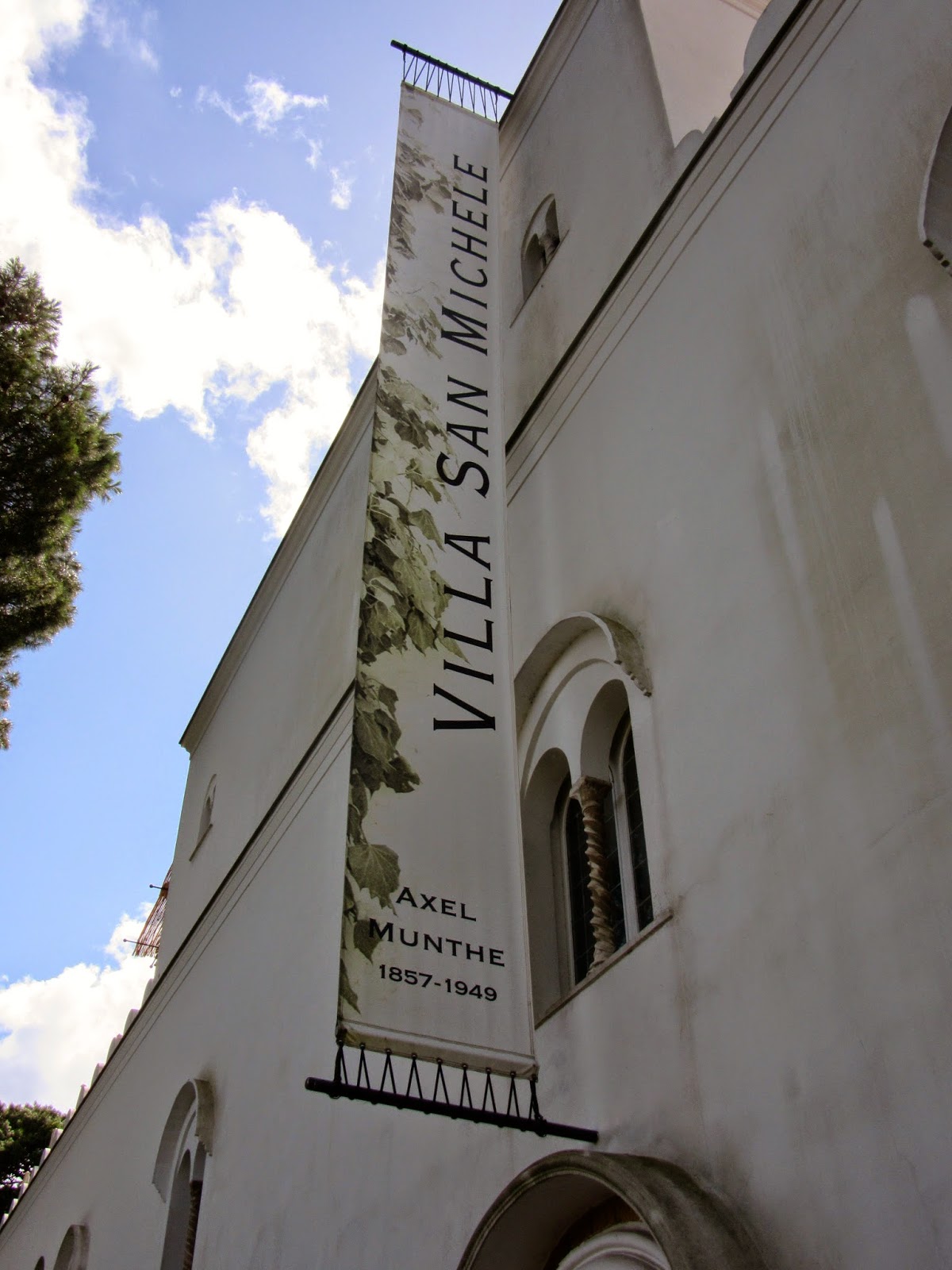“I want my house open to sun and wind and
the voice of the sea,
like a Greek temple, and light, light,
light everywhere!”
– Axel Munthe, The Story of San Michele
 |
| Villa San Michele, Anacapri |
While researching my trip to the island of
Capri, I came across photos of a white stucco building perched on the steep
hillside of Anacapri. It had a shady terraced garden and a mysterious sphinx,
with magnificent views of the sea far below. This was a magical place I longed
to experience for myself. This was Villa San Michele.
From
Anacapri’s central square, Piazza Vittoria, the villa is a five-minute walk. There are
plenty of signs to point the way so you can’t miss it, even if you get
distracted by the hand-made sandals or lemon scented soaps in the shops along Via
Capodimonte.
 |
| Lemon Soaps |
 |
| Villa San Michele |
 |
| Villa San Michele Entrance |
Axel Munthe, a Swedish physician and
author, established this unpretentious dwelling on the site of Villa
Capodimonte, one of several imperial villas built by the Roman Emperor Tiberius. The museum contains art and antiquities (Roman, Etruscan and Egyptian), some unearthed on the property but most collected by Munthe. A visit to Villa San Michele begins with a tour through the rooms of the villa.
 |
| Munthe's Collection of Antiquities |
 |
| The Dining Room |
 |
| The Kitchen |
 |
| The Atrium, or Interior Courtyard |
 |
| The Bedroom |
In the centre of the sculpture loggia sits the figure of Hermes. The bronze
statue was a gift to Munthe from the city of Naples in appreciation for his
work during a cholera epidemic in 1884. It’s a copy of Seated Hermes, recovered
from the excavations at Herculaneum in 1758 and now displayed at the National Archeological Museum
of Naples.
 |
| Sculpture Loggia |
 |
| Copy of Seated Hermes |
Beyond Hermes stretches a pergola covered in Chinese wisteria vines with glimpses of the sea between its white supporting columns. In a planting of African lilies stands a bust of Axel Munthe.
 |
| Pergola |
 |
| Bust of Axel Munthe |
 |
| Loggia Columns |
 |
| View from the Loggia |
 |
| The Tyrrhenian Sea |
Lovely as this terrace was, a sign pointed the way to La Sfinge, the Sphinx, and I knew there was a better vantage point ahead. I climbed the stairs to the chapel loggia on the next level.
 |
| Stairway to the Chapel Loggia |
 |
| Ancient Columns and Capitals in the Garden |
There are actually two sphinxes on the chapel terrace, the first a marble Etruscan Sphinx.
 |
| Etruscan Sphinx, Villa San Michele |
Nearby on a parapet looking east over Marina Grande is the sphinx I'd really come to see, the famous Egyptian Sphinx. She gazes off into the distance at the rugged Sorrentine coast, the great port city of Naples and Mount
Vesuvius. The red granite figure depicting a woman's head on a lion's body dates from the time of Ramses II but no one is
sure of its exact origins. Legend says that if you make a wish while placing
your left hand on the sphinx, your wish will be granted. My wish had already been fulfilled.
 |
Egyptian Sphinx, Villa San Michele
|
 |
| St. Michael the Archangel |
Eventually I tore myself away from the beautiful views and moved on to the terraced gardens, so shady, cool and peaceful. Birds
twittered and fountains trickled, inviting me to stroll among the scented pines, palms and cypress trees. A small pavilion houses the Olivetum, a bird and nature museum,
where visitors can learn about the local flora and fauna.
 |
| Gardens of Villa San Michele |
 |
| The Olivetum |
 |
| Garden Walkway |
 |
| Hydrangeas in Bloom |
 |
| Orange Trees |
 |
| Exit from the Garden |
If You Go:
Villa San Michele is open daily year round (check the web site for hours as they vary by season) and admission is €7. To learn more about the villa and the fascinating
man who built it, read The Story of San Michele by Axel Munthe. The memoir was first
published in 1929 and became a bestseller in several languages.
Next: Great Art Museums of Florence
Related Post:
































No comments:
Post a Comment
All comments are moderated.
Note: only a member of this blog may post a comment.